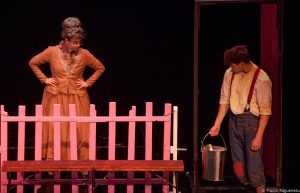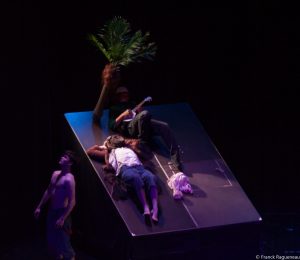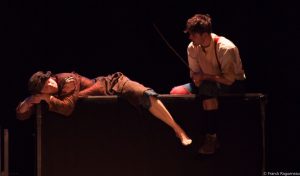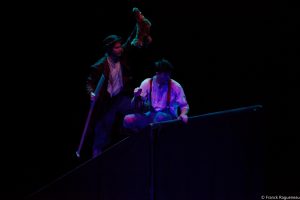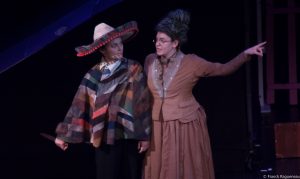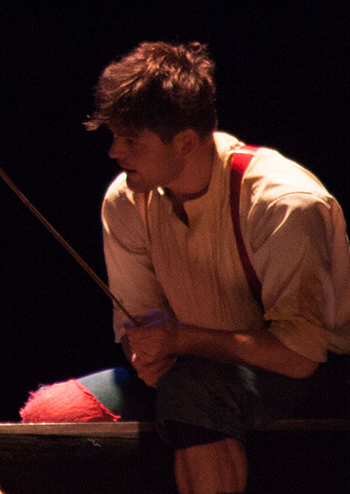
Tom Sawyer
d'après Mark Twain
Spectacle en langue anglaise
Mise en scène de Gaspard Legendre
Avec Daisy Boyden, Ivan Comisso, James G. Nunn, Mia Nuttgens, Bobby Stallwood
Nouvelle adaptation : Paul Stebbings
Musique : John Kenny
Chorégraphies : Franck Ragueneau
Durée : 85 min
A propos
It has been a lot of fun re-imagining this adventure novel written by Mark Twain!
The five actors that make up this ensemble tell this children’s tale in a very cinematic way, whilst maintaining a theatrical experience…
The characters address the audience members directly, creating and maintaining a connection with them throughout. We use movement to embody the characters at different stages of life, social status and their relationships within this 1840s micro-society in the fictional Saint Petersburg, Missouri, right-side of the Mississippi river. The actors play both children and adults within the story. Despite this being a childrens novel, the characters are intense, have depth and are extremely complex.
‘School days’ create a timeline in the piece: every day, Alfred goes to school, accompanied by his father. We see his relationship with another boy and with Tom… The actual school is never represented on stage, but we know this is the place Tom constantly avoids, preferring to pursue more exciting adventures…
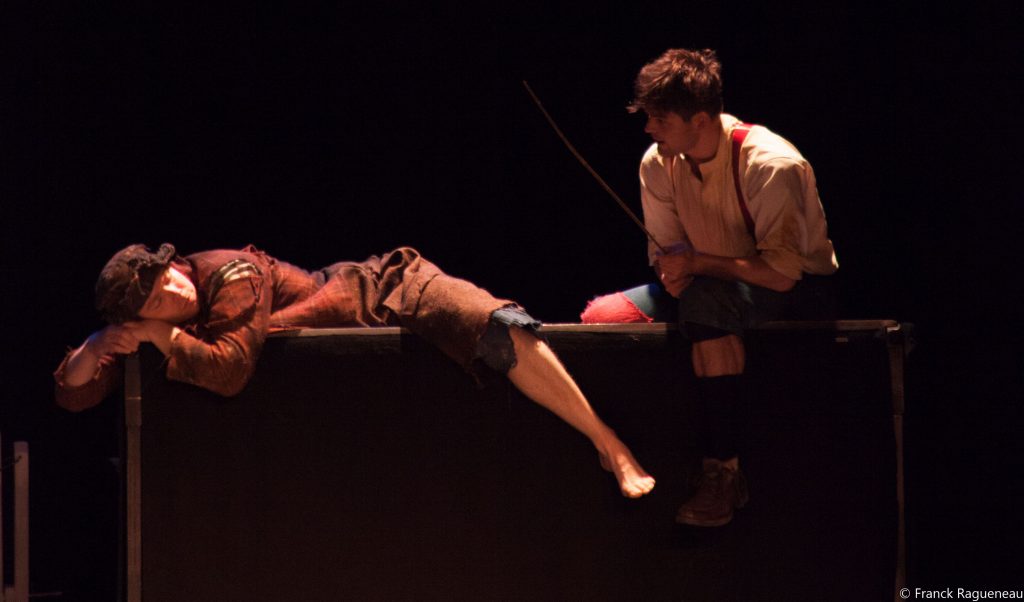
Even if the story seems simple at first sight, the main themes are ones adults will often face and the play is relatable anyone, of any age

Minimal multipurpose items of set create different environments throughout the play, sparking the imagination of the audience in visualising scenes. Set changes are danced: the actors-characters take joy in creating new spaces and bringing the audience members with them into these different representations within Mark Twain’s novel. Twice, the characters imagine a scene, and through different techniques, we physically see what is being imagined by the character. This happens when the three boys on the island imagine how the towns inhabitants would react to their absence, and at the end of the play when Polly visits the judges house: this house is un-built in front of us, taken away by the wind… At the first blackout in the play, things change and we watch the action… sideways… This portrayal reminds the audience of the theatricality whilst still representing the scenes of the story intensely, but in a new way.
Each element of the set is highly symbolic in the life of Tom Sawyer: the main structure, a raked stage built like a slide could represent how Tom is diving into life, the permanent unbalance in his adventures, and will represent in turns, the roof of Aunt Polly’s house, the island, the stairs of the haunted house and the cave… Benches represent of law and obligation: at Polly’s house or in the church, it’s never Tom’s choice to sit on them. They also represent Mr Williams’ grave. Fences are painted by Tom at the beginning – how will this child, who only dreams of freedom and adventures, paint these symbols of laws and order. Fences define spaces Tom shall not trespass… but at the beginning, he will just jump them. A door will add more context to the different scenes, the way characters enter and exit different places helping the audience members follow the story. It is also a symbol of the now and the future – before and after entering new places – and will represent Mr Williams’ coffin. The children are discussing death to frighten each other but soon they will face the murder and maybe realise that life always ends…
The other children and adults in the story walk in a set way, in squares, respecting abstract rules and law of real spaces, spaces created by the Government in this micro-society, never trespassing the fences… Apart from Bad’n’Joe who will act more on instinct, driven by smell and breaking the window in the trial scene… Is this reference used again in the iconic scene of Milos Forman’s ONE FLEW OVER A CUCKOO’s NEST? Cancelling the racist idea of him being an Injun in the original text (please see the writer’s note), we work on how instinctive the character could be, driven by his different senses and with a different relationship to death.
Huck surprises the audience in the way he appears each time: he appears in places and ways we don’t expect. He breaks the spaces as he is a free spirit. This freedom is one of the reasons why Tom admires him… He becomes the leader at the end of the show, for the last adventure, a direct wink to Mark Twain’s second novel and to what could be written at the end of a movie : « to be continued ».
Even if the story seems simple at first sight, the main themes are ones adults will often face and the play is relatable anyone, of any age. These universal themes speak to all ages and translate across time and continents…

